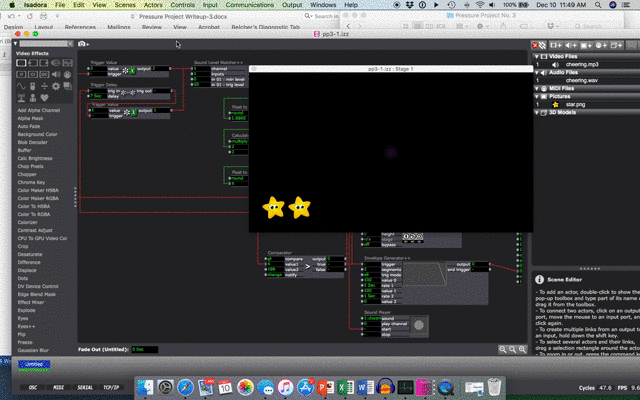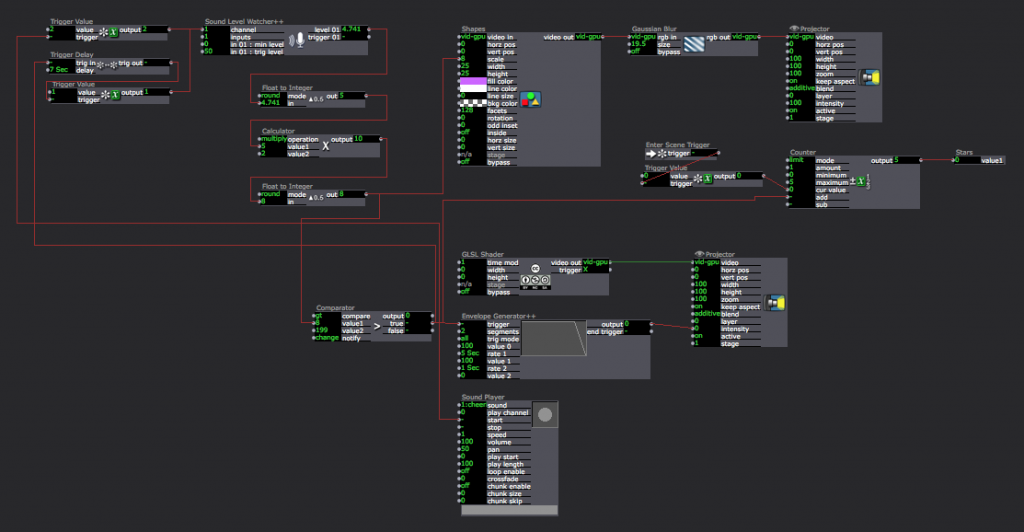Pressure Project #3: Paper Telephone Superstar!
Posted: December 10, 2017 Filed under: Pressure Project 3 Leave a comment »Paper Telephone Superstar! is a simple, but interactive riff on the old Telephone game in which the meaning of media is blurred through transmission. My goals for this project were to create a gaming experience that was familiar, required only simple instructions, and included a responsive digital element that enhanced play.
The rules of the game were distributed to players, along with a blank piece of paper:
- Sit in a circle
- Write a short phrase at the top of the paper
- Pass your paper to the person on your right
- Draw a picture of what is written, then fold the paper down to cover the writing
- Pass the paper to the person on your right
- Write a short phrase the describes the picture, then fold the paper down to cover the picture
- Pass the paper to the person on your right
- Repeat until everyone has their original paper back
- Unfold your paper take turns sharing the hilarious results! Clap loudly for the best or funniest results! Whoever gets the spinny star wins!
I watched the players read the rules and then settle themselves on the floor in a circle. A screen mounted on the wall above the players pulsed slowly with a purple light that grew or shrunk depending on how much noise the players were making.
After the first round, when everyone had got back their original papers, the players took turns unfolding them and laughing at the results. The biggest laughs triggered the Isadora patch to erupt with fireworks and cheering, and a star dropped down on the screen. The person who got the fifth star wins the game with a gigantic spinning star, more fireworks, and louder cheering!
The patch itself is straightforward, drawing audio from the live capture functionality in to a Sound Level Watcher actor, and then into a Comparator to determine what actions should happen and when. A counter keeps track of how many stars have fallen and when to kick off the final animation that designates the winner.
The most challenging part of this project was gauging the appropriate level of sound that would trigger a star. This varied by room, and distance from the microphone, the number of people, and how loud they were. I did a lot of yelling and clapping in my apartment to find an approximate level, and then surreptitiously did a sound level check of my classmates during a busy time in the Motion Lab. I also spent time finessing the animation of the stars dropping, adding a slight bounce to the end.
This game is re-playable, but only once the sound levels are correctly set for a given environment. One way to resolve this would be to include a sound calibration step in the Isadora patch in order to set a high and low level before the game starts. Another option would be swap sound for movement; for example, players wave their arms in the air to indicate how funny the results of the game are.


